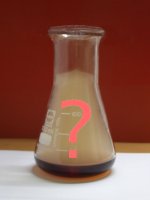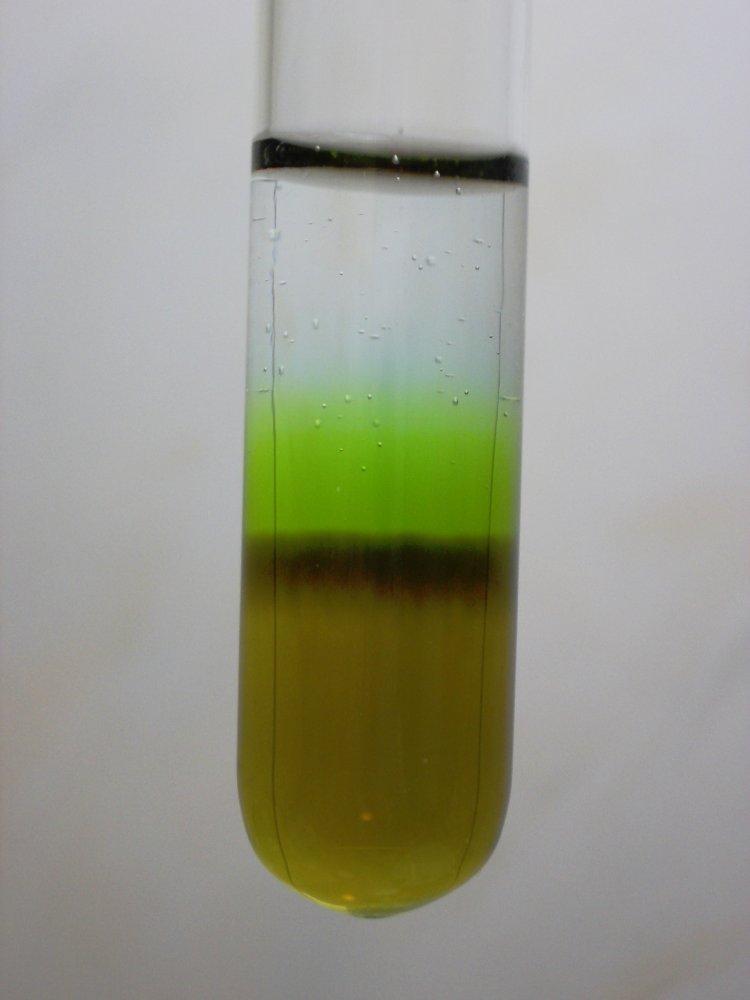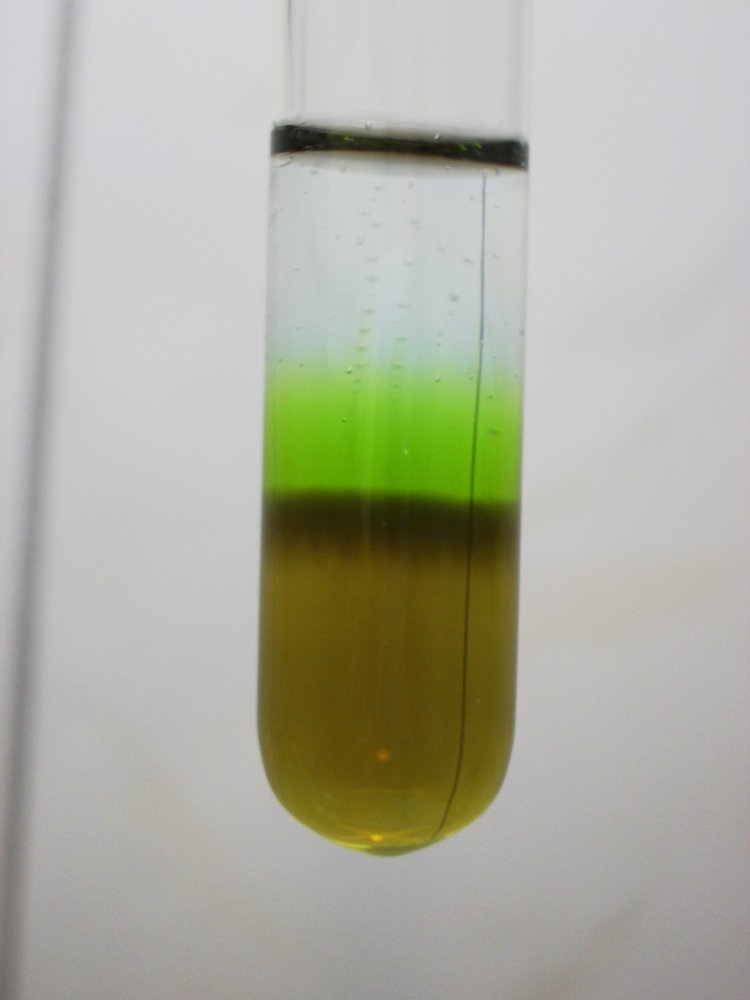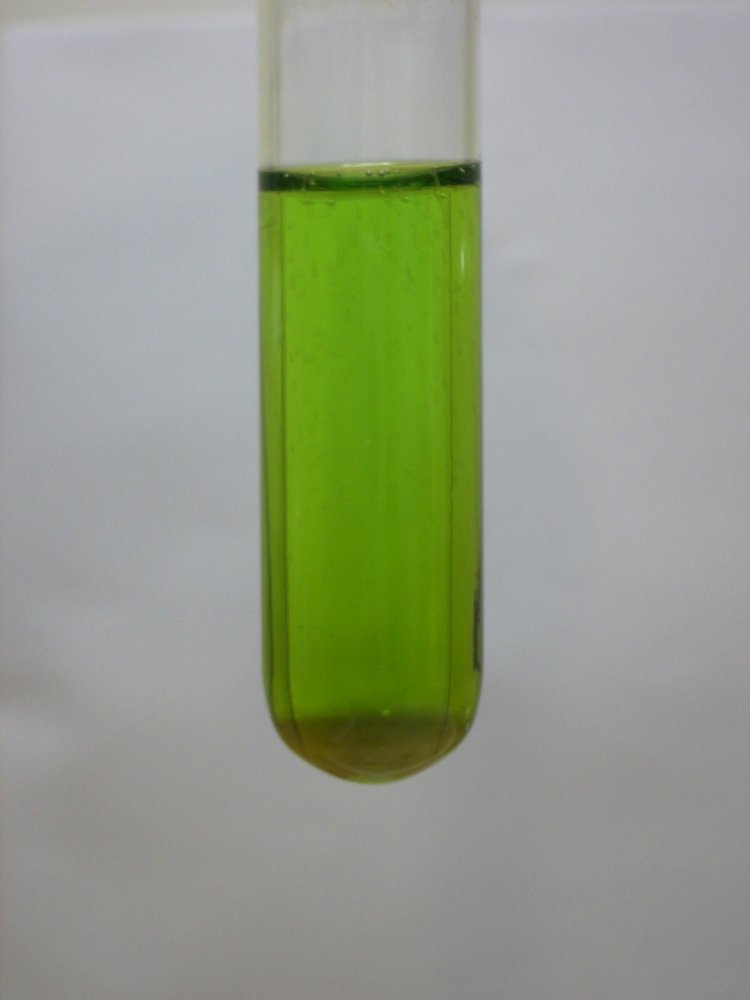


Layers of copper (I), copper (II) and hydrogen peroxide, ring reaction
This experiment shows formation of a dark compound on reaction between two solutions, the one containing a lot of copper (I) and the other containing hydrogen peroxide. The copper (II) formed from the copper (I) and the hydrogen peroxide reacts and forms a dark compound at the layer, where hydrogen peroxide and acidic copper (I) liquid diffuse into each other. A dark brown ring of a mixed-oxidation-state copper (I) / copper (II) complex is formed.
This reaction shows that copper (I) and copper (II) really react to form a dark brown compound. Besides this, this also is a very nice experiment on its own, demonstrating that miscible liquids can form nice layered systems, which remain stable for a long time.
![]()
![]() Required chemicals:
Required chemicals:
-
copper chloride dihydrate
- ascorbic acid
- concentrated hydrochloric acid, 30% HCl
- dilute hydrogen peroxide, 3 to 6 %
![]()
Procedure for the experiment
The following steps must be performed:
- Prepare a solution of CuCl2·2H2O in concentrated HCl.
- Add ascorbic acid in small amounts and with some heating in order to increase speed of dissolving of the solid. At first, the liquid becomes very dark, almost black. When more ascorbic acid is added, however, the liquid becomes lighter again. In this experiment ascorbic acid must be added, such that the liquid is fairly light yellow brown. At that point a small excess amount of ascorbic acid is used.
- Carefully pour a 5% solution of H2O2 on the liquid, along the glass wall of the test tube, taking care that the liquids do not mix up completely.
- Let test tube stand for a while and observe what happens.
The result is shown in the following two pictures.


These two pictures were taken with an interval of time of 2 minutes between them.
The lower layer is the original solution with copper (II) chloride, ascorbic acid and HCl (30%).
The thin dark layer on top of this is the dark compound formed on reaction of copper (I) and copper (II). The copper (II) is formed from copper (I) and H2O2. This is the dark brown ring of the mixed-oxidation-state copper (I) / copper (II) complex.
The green layer, which becomes lighter and more blue, when going upwards is due to copper (II), mixed with H2O2 and HCl.
The colorless layer at the top is 5% H2O2.
![]()
The situation is very stable. Even after 10 minutes hardly any changes can be observed. After that time, the liquid was shaken carefully. The result is shown here. The picture is taken immediately after shaking. It shows a small amount of the original light brown liquid, covered by green H2O2/Copper (II)/dilute HCl.

![]()
Discussion of results
This experiment provides strong evidence for a reaction between copper (I) and copper (II). The copper (II) is generated at the border between the H2O2 layer and the HCl/copper (I) layer. Only at the border, the dark brown color can be observed.
Remark: Copper sulfate can be used here, instead of copper chloride. Probably any other reductor, strong enough for reducing copper (II) to copper (I) can be used instead of ascorbic acid. The reductor should not be used in large excess amounts.
back to main copper riddle page